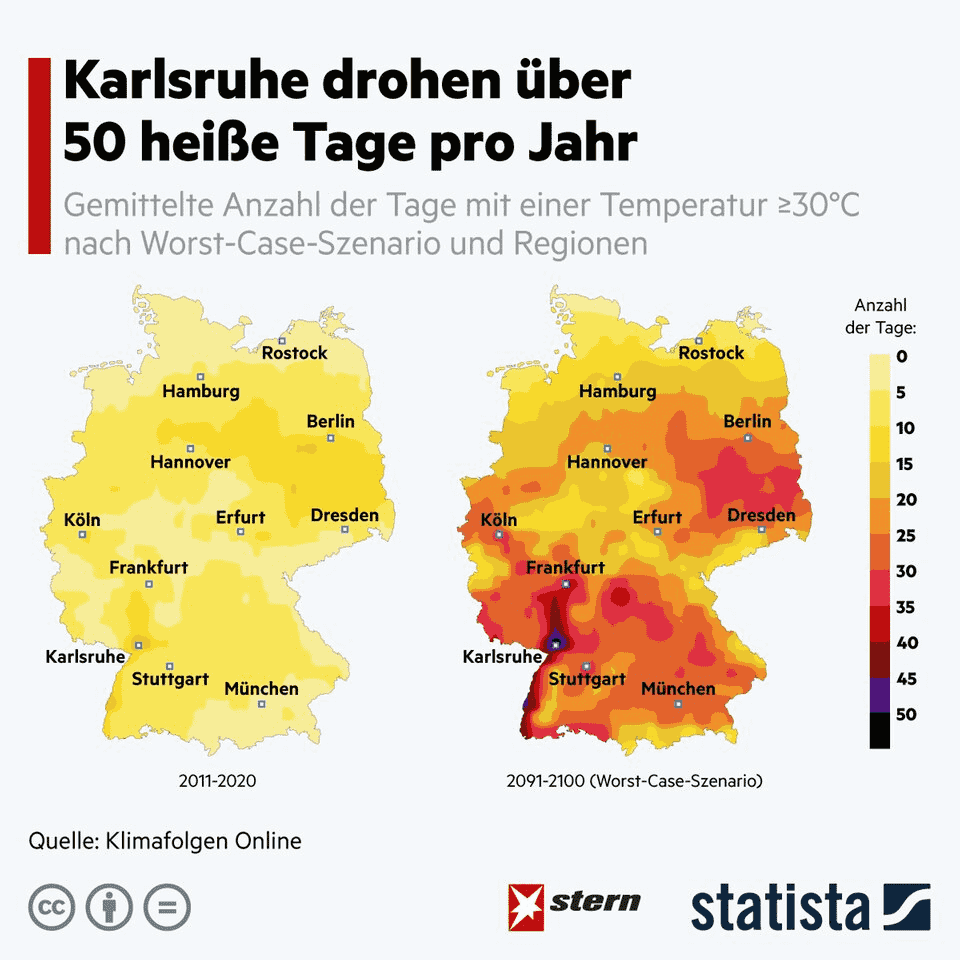Climate change
Karlsruhe is threatened with over 50 hot days per year
Climate change is also leading to more drought and heat in Germany
© Getty Images
It could get extremely hot in Karlsruhe in the future. The southern German city is threatened with temperatures above 30 degrees Celsius for 50 days by the end of the century. But other cities also have to be prepared for the heat.
Global CO2 emissions have recently risen again and the 1.5 degree target for Paris is a long way off. If global warming continues to follow this worst-case scenario, there would be serious climate changes in Germany. As the Statista-Graphics based on data from the portal Climate impacts online shows, the city of Karlsruhe is threatened with more than 50 days per year until the end of the century, on which the maximum daily temperature is at least 30 degrees or higher. At the moment it is only so hot there on 15 to 20 days. There would also be significantly more hot days in many other regions of southern and western Germany. The Climate Impact Online portal is a joint product of the Potsdam Institute for Climate Impact Research e. V. and WetterOnline Meteorological Services GmbH.

The forecast, which is often referred to as the “worst-case” scenario, is currently considered to be particularly realistic. It is based on a world economy that will, in principle, continue as before and cover its high energy consumption primarily with fossil fuels. The Intergovernmental Panel on Climate Change (IPCC) developed it in 2005 under the abbreviation RCP 8.5. The RCP scenarios define certain models of greenhouse gas concentrations and calculate the climate change caused by them. At RCP 8.5, the temperature rise by 2100 compared with the pre-industrial state (mean value for the years 1850-1879) was around 4.8 degrees, as this Statista graphic shows.
The corona pandemic only slowed climate change briefly. Worldwide emissions of the greenhouse gas CO2 are almost as high as they were before the crisis. A high concentration of greenhouse gases in the atmosphere restricts the heat emitted by the earth from escaping into space. The result: temperatures on earth are rising. Global warming can be measured, among other things, from the anomalies of global average continental temperatures. Temperature anomalies are deviations in temperature that are measured using calculated long-term temperature averages. The rise in temperature can also be seen when looking at the glaciers. The average annual mass loss of glaciers worldwide was over one meter in 2018/19. The area of the Arctic has also shrunk in the past 40 years and the height of the sea level has risen noticeably at the same time.

